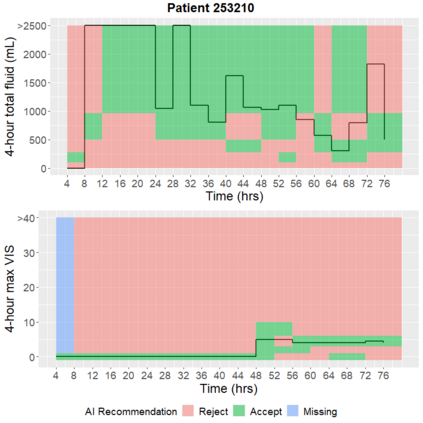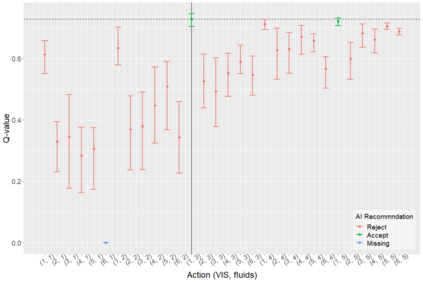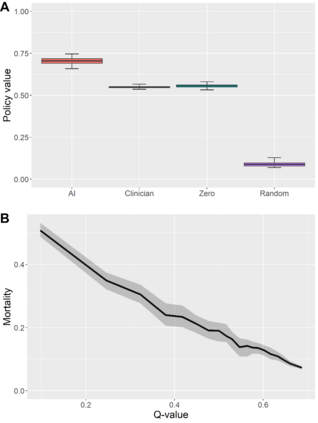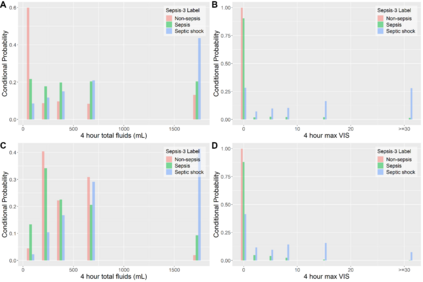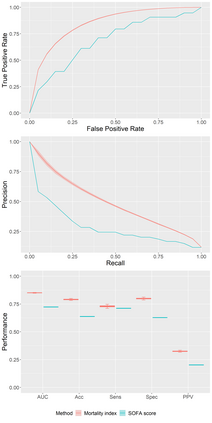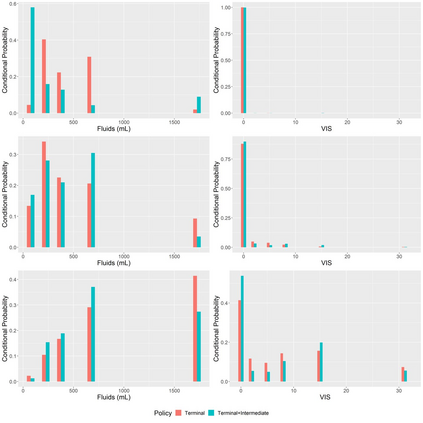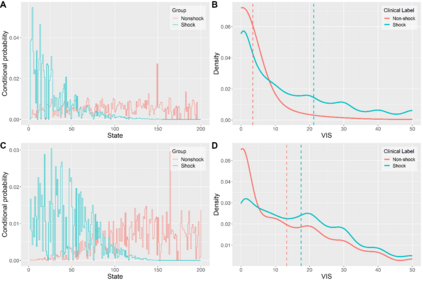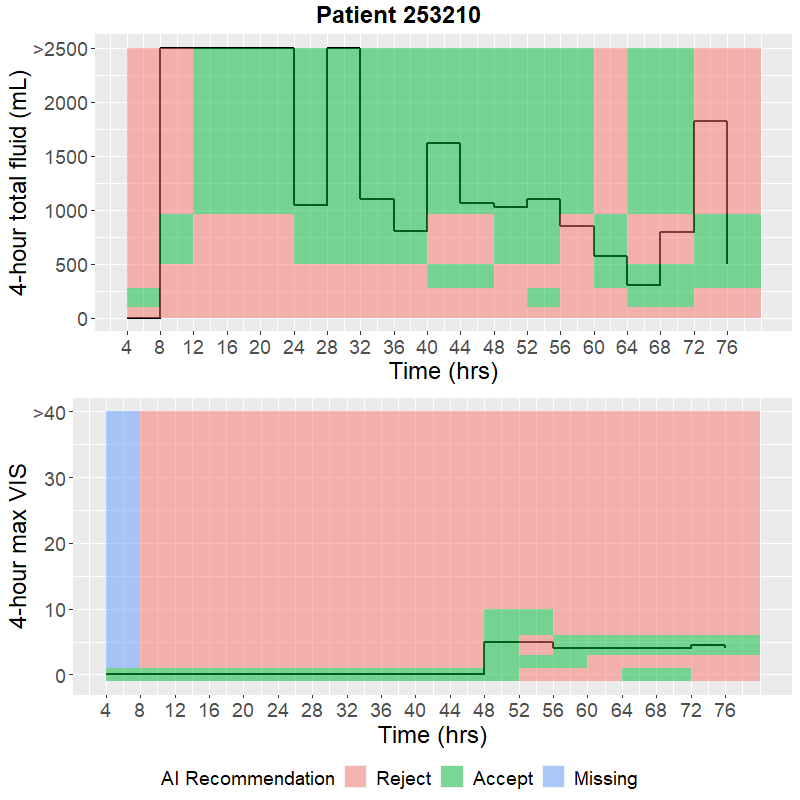Guideline-based treatment for sepsis and septic shock is difficult because sepsis is a disparate range of life-threatening organ dysfunctions whose pathophysiology is not fully understood. Early intervention in sepsis is crucial for patient outcome, yet those interventions have adverse effects and are frequently overadministered. Greater personalization is necessary, as no single action is suitable for all patients. We present a novel application of reinforcement learning in which we identify optimal recommendations for sepsis treatment from data, estimate their confidence level, and identify treatment options infrequently observed in training data. Rather than a single recommendation, our method can present several treatment options. We examine learned policies and discover that reinforcement learning is biased against aggressive intervention due to the confounding relationship between mortality and level of treatment received. We mitigate this bias using subspace learning, and develop methodology that can yield more accurate learning policies across healthcare applications.
翻译:对败血症和化粪休克的基于准则的治疗是困难的,因为败血症是威胁生命的器官功能障碍,其病理学没有得到完全理解。早期败血症的干预对于病人的结果至关重要,但是这些干预具有不利影响,而且往往管理过度。必须提高个性化,因为没有任何单一行动适合所有病人。我们提出了一种新型的强化学习方法,在其中我们从数据中找出消毒治疗的最佳建议,估计其信任度,并找出在培训数据中很少观察到的治疗选择。我们的方法可以提出几种治疗选择,而不是单一的建议。我们研究学习的政策并发现,强化学习不利于积极干预,因为死亡率和治疗水平之间的关系相互交织。我们利用次空间学习来减少这种偏差,并开发能够在整个医疗保健应用中产生更准确的学习政策的方法。

